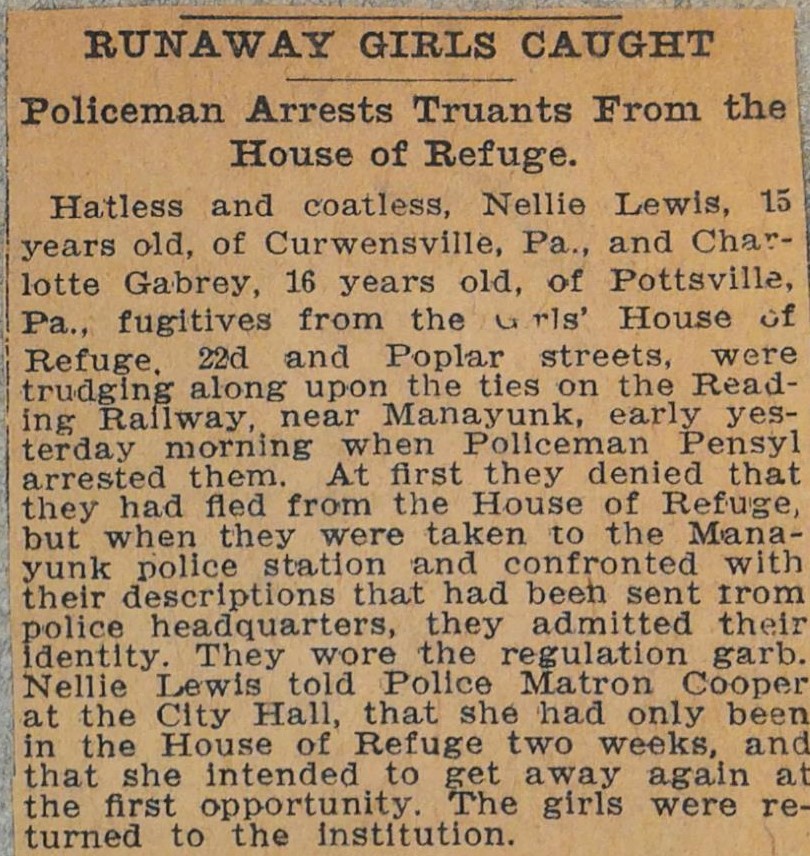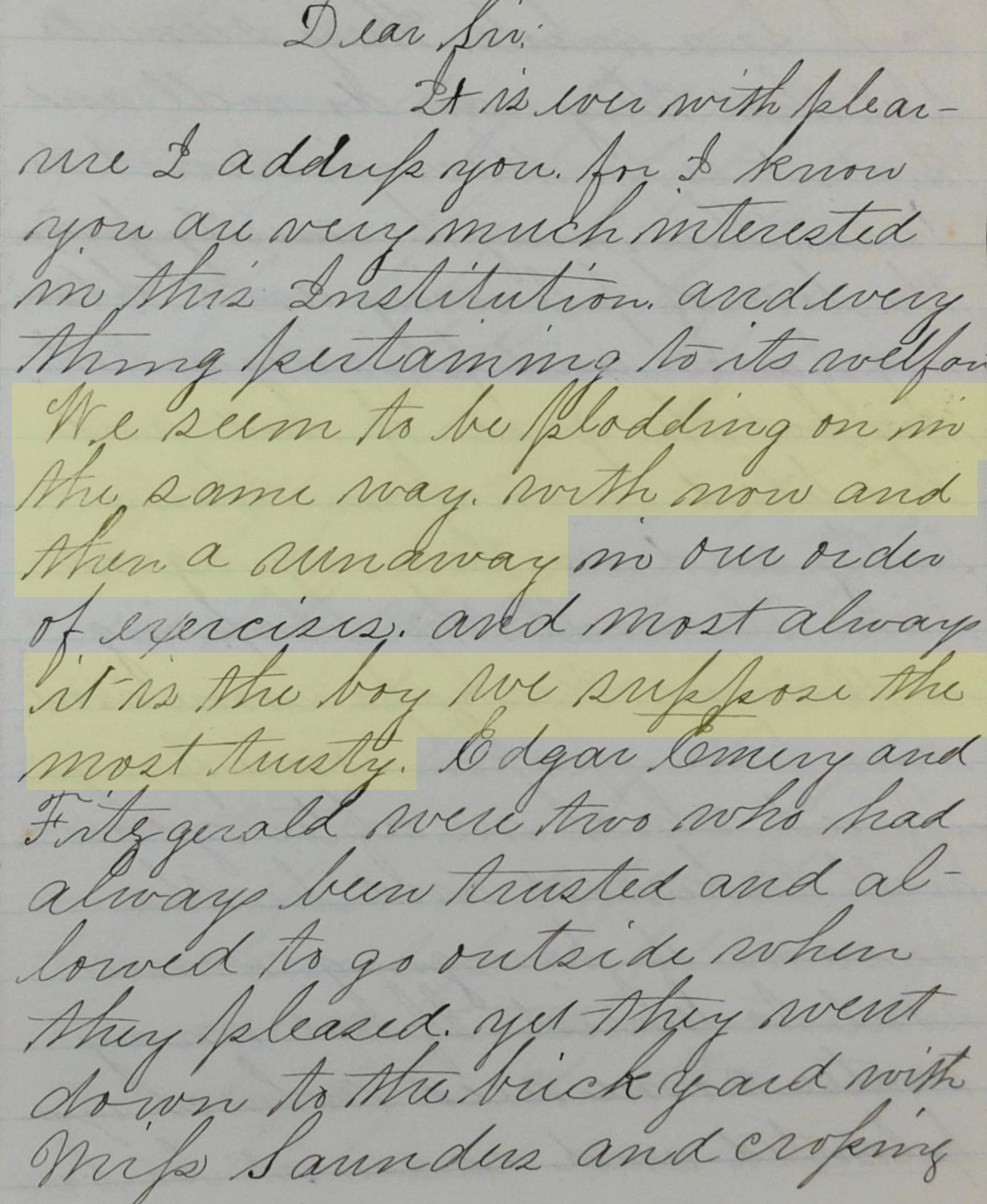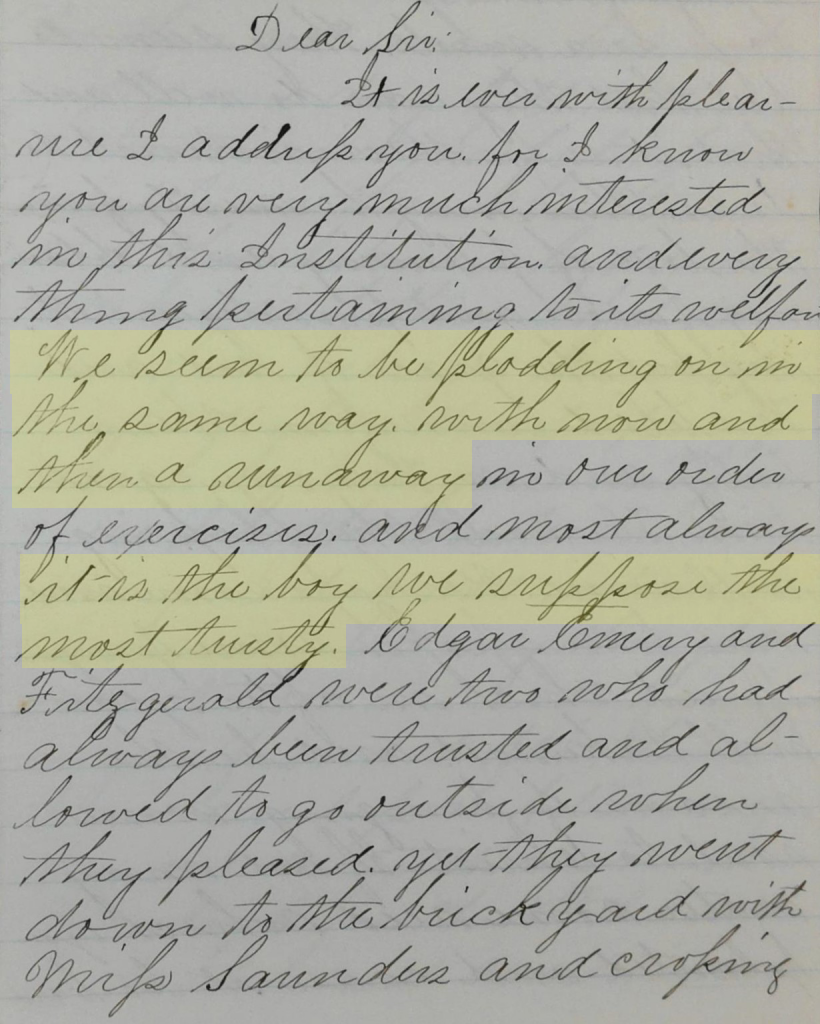Highlighted Text: “We seem to be plodding on in the same way, with now and then a runaway in our order of exercises, and most always it is the boy we suppose the most trusty”

With these two text documents, we are able to see the ways that, as I alluded to earlier, resistance to reformatories manifested and was documented in the dominant archive. In the first document, written in 1867, an administrator at a New York Reform school wrote to the future founder of the Maine Industrial School for Girls about the problem of runaways that they were both experiencing. The mention of runaways being the most-trusted among the incarcerated is particularly noteworthy because of the way it allows us to read agency into the boys’ narratives and begin to imagine their approach to resistance. Similarly, in the newspaper clipping, we are able to get a clearer glimpse at Nellie’s resistance through running away from her assertion that “she intended to get away again at the first opportunity.” Both examples talking about people running away in pairs or small groups also gives us an idea of the interpersonal networks of care and/or resistance between youth at these institutions. The span of time between the two documents also lets us know that this is a consistent strategy of resistance by youth.
Questions
What other ways can you read resistance in these two documents?
How do these narratives shape/change your perception of resistance within reformatories and the youth in them?
How do these recorded instances of resistance contribute to the creation of what Kelly Lytle Hernandez has called the “rebel archive”?

